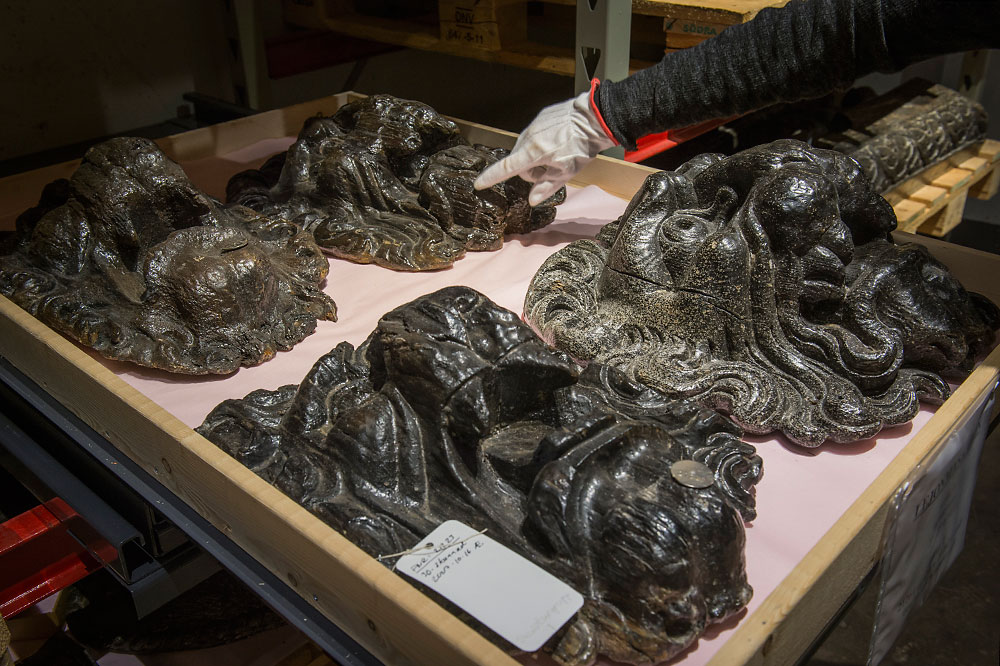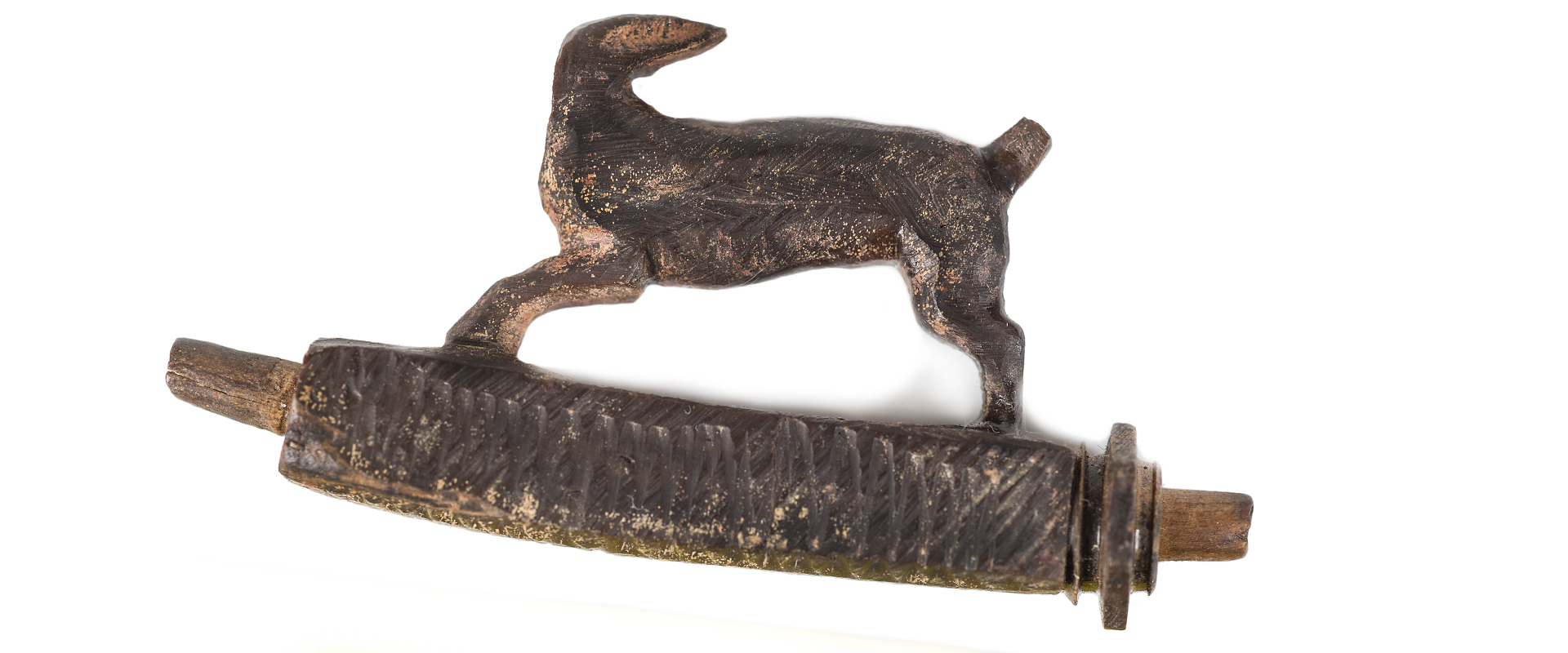Dressed in rain wear and newly vaccinated against whatever bugs might live in a sunken ship, a team of archaeologists descended into the black sludge that filled Vasa in April 1961. When they finished five months later, they had recovered more than 30,000 fascinating objects from 1628 and begun to understand what life might have been like aboard a Swedish warship.
Once Vasa had seen daylight again on 24 April 1961, the ship was emptied of water by three enormous pumps. The work continued for ten days, and while it was in progress, divers worked on inspecting Vasa's hull and plugging leaks in it. On 4 May, the ship was towed to the Gustav V dry dock on Beckholmen. There, she was turned loose of the lifting barges and floated on her own keel into the dock and onto a specially constructed concrete pontoon.
Archaeologists take centre-stage
Archaeologists had come aboard the ship virtually as soon as there was a dry place to stand. They were led by Per Lundström, who later became the director of the National Maritime Museum. He had put together a team consisting of ten archaeologists, almost all recent university graduates, plus a photographer and an artist. All were vaccinated against a number of diseases, among them typhoid and tetanus, as no one knew what dangerous bacteria might lurk in the mud which covered all of the decks.
The ship was being sprayed around the clock with cold, fresh water to keep it from drying out, and so the team worked in a constant, muddy drizzle. They wore rain gear and hard hats, with towels wrapped around their necks, but chill water still found its way in through cuffs and collars. They finished each day covered in the foul-smelling, black, sticky mud.
The mud was removed from the decks with garden hoses and spray nozzles, washing it down into the bottom of the hull. As the mud and silt flowed away, it revealed an astonishing array of artefacts lying heaped on the decks. Each object was carefully registered, with its find place recorded, and given a unique find number before being taken ashore and placed in water-filled tanks to await conservation. Finding enough tanks for thousands of artefacts proved a challenge, and the project combed the scrap merchants of Stockholm to buy up all the old bathtubs they could find.
The excavation continued for five months, and the archaeologists were working under heavy time pressure. The engineers responsible for stabilizing the ship did not know how long the old structure could hold the immense weight of mud and objects inside, which they estimated at over 1,000 tonnes. They were especially worried about all of the mud and water draining into the hold, and eventually had to cut three large holes through the planking. The ballast, 120 tonnes of stone, was also a concern, and an elevator was built in the main hatchway to lift it out of the ship.
During these five months, Per Lundström's team recovered more than 30,000 objects from Vasa. These consisted of virtually everything that had been on board when the ship sank, except for the guns and debris salvaged in the 1660s. Gun carriages stood at their gunports, sailors' chests full of their belongings were stacked towards the bow on both gundecks, barrels of salted meat, now reduced to bones, were found in the hold, along with hundreds of cannonballs. Huge coils of anchor cable filled the forward hold, and the officers' possessions, such as pewter plates, hunting rifles, and a gilt brass table clock, were found in the cabins. Over 4,000 coins, all of them small denomination pocket change, were found in chests and in the pockets of the clothes worn by eleven human skeletons found on the decks. Among the most remarkable finds were two large heaps in a locker on the orlop, which proved to be the carefully folded remains of six of Vasa's sails plus the sails for the longboat, still tied up as they had been delivered from the sailmaker in 1627.
Diving in the Pit
Even after Vasa was raised, work continued at the site of the sinking. Many objects had fallen from the rigging or become detached from the hull and fallen into the mud outside the ship. From 1963-1967, divers surveyed the Pit, as it was known, and recovered thousands more objects. These included many sculptures, the collapsed beakhead and upper sterncastle, the upper parts of the foremast and mainmast, the ship's anchors and the longboat, a substantial vessel nearly 12 metres long and weighing over three tonnes, which proved to have another, smaller boat inside it. Four more skeletons were found in the wreckage of the stern galleries.
By the time all of the excavation and diving was complete, over 40,000 objects had been found, including almost all of the parts of the ship itself which had fallen off over the years. It would prove possible to reconstruct Vasa more or less completely, inside and out, and to know something of the people who made up the crew, their possessions, and their lives.

